Lowdown: Stablising Art Spaces
An extensive report exposes an area where the creative community needs support and advocacy, proof that backing artists pays off and a raft of residencies, awards and finalists to celebrate.
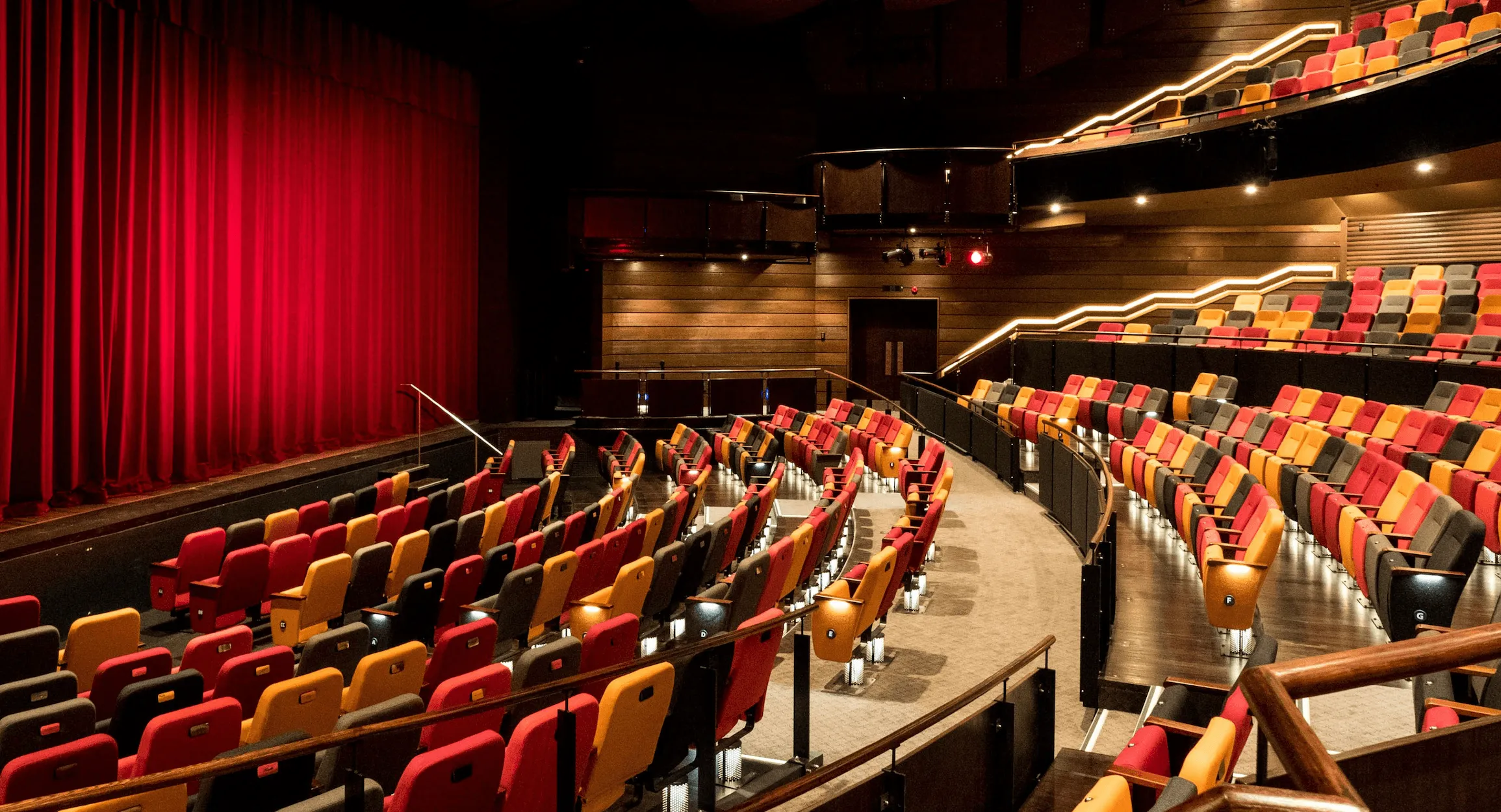
It won't surprise anyone in the creative community - but the findings of this new report need to be heard. While it's meaty, it's worthwhile.
After extensive surveying and researching, the first significant national survey and discussion on the state of independent arts housing in Aotearoa has been released - titled the Stable Spaces report.
It's driven by independent researcher and arts advocate Dr Melissa Laing and with MCH funding, has taken two years to put together. At its essence, the report underlines that arts needs physical infrastructure to thrive - both custom built and adaptively repurposed. Right now, we don’t have enough.
Laing told The Lowdown "Anecdotally, people have been expressing stress about the cost and availability of appropriate space for as long as I’ve been in the arts.
"When I analysed the responses from the Stable Spaces survey, I wasn’t surprised to find that only 13% owned, or that 22% of the respondents were moving between temporary and domestic spaces. Nor was I surprised that those with ad-hoc arrangements were more negative when reporting how their space supported their practices.
"What I was pleasantly surprised by is the level to which the commercial property market is supporting the arts by providing under market rate leases. However, a significant proportion of those leasing would still like to improve the security and duration of their accommodation."
Among the report's other stats of note - there is significant accommodation instability in the arts with 47% of respondents having moved once or more in the last five years, with 53% of relocations forced rather than made for strategic reasons.
28% of the arts sector are using their homes as workplaces, and while leasing is working for many, 62% are on temporary or short- term arrangements, including month-by-month or year-by-year leases and alternative arrangements - which adds unnecessary levels of stress and anxiety.
Ownership isn't just about asset owning or stability, it's also an important step in allowing creative autonomy. If an artist or creative organisation owns the building, they can design or modify it so it fits its purpose, allowing for the best possible creative outcomes. Laing also identified that it provides a perception of professionalism and provides a flow-on ability to support the wider arts community and economy.
The proposal to address this pressing issue focusses on four key areas:
- Developing nationally-consistent policy that enables asset transfer; affordable leasehold agreements; and the inclusion of arts facilities and live-work spaces in our developer incentives
- Growing the range of available financial instruments by addressing funding issues for infrastructure providers; developing a wider range of financing sources than are currently commonly used; and creating collective economies of scale in property management in the arts
- Building property development and management expertise, providing access to general guidance; expert advice; and mentorship to support the transition into building ownership
- Promoting the possibility of building ownership - this involves actively promoting the feasibility and process of arts and community ownership of buildings, to both national and local government and the arts community.
Laing explains "There are concrete steps we can take to increase building ownership in the arts community, from developing consistent national approaches to asset transfer to establishing creative land trusts. The report outlines pathways to increasing building ownership and presents both local and international examples of what has succeeded.
"It also points out that developing these pathways will require not only significant advocacy from the arts, but also the participation of the government departments and ministries that have responsibility for community development, arts, housing and urban development. It will need input from Local Government New Zealand and the Companies Office, as well as community law bodies, developers and the philanthropic sector."
Laing underlines "Changing the level of building ownership in the arts is a long-term project, and the report is only the beginning.
"It provides the arts sector with a really strong basis from which we can demonstrate our housing problem and advocate for the implementation of permanent solutions. Once we’ve all had a chance to read and consider the report, the next steps for our sector are to form an advocacy collective to have these conversations with national and local government, and the development and philanthropic sectors.
"Jo Randerson’s comment in the interview for the Vogelmorn Community Group case study has stuck with me – 'we are way more capable than we give ourselves credit for.' The nine case studies I drew on to write the report really demonstrate what we, in the arts, can achieve on a wide range of scales."
SongHub success
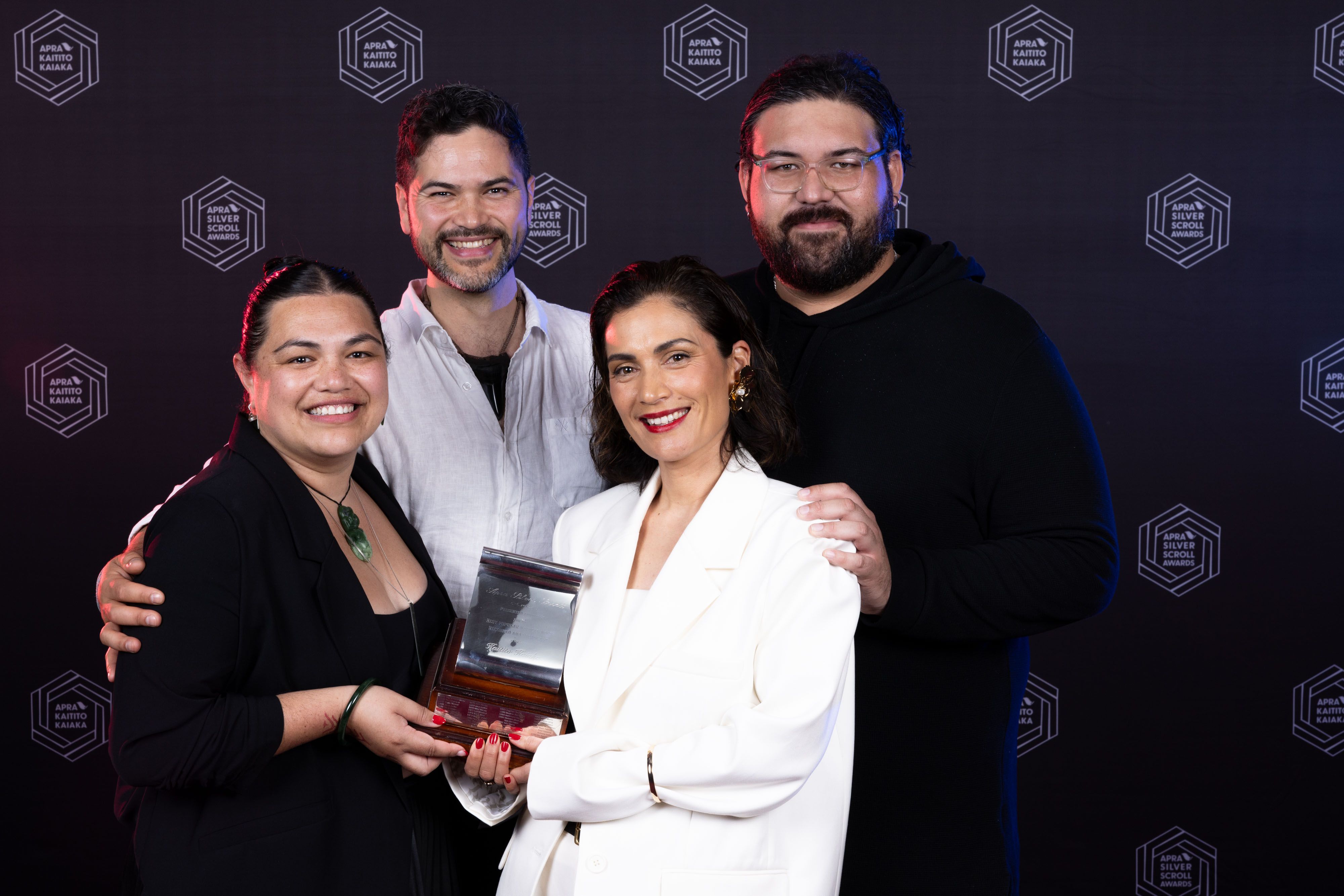
The SongHub concept has been going strong in Aotearoa for a number of years - and it was on full display at the Silver Scrolls.
Not one, but two of the big awards dished at the Silver Scrolls (full details here on The Big Idea) for songwriting came from the same Māori SongHubs initiative in 2022. Both the Silver Scroll-winning Kātuarehe by Anna Coddington and Jordyn with a Why's Maioha Award success story He Rei Niho were born from the opportunity for these artists sit gather and collaborate with other songwriters.
Anthony Healey, APRA AMCOS Head of NZ Operations, told The Lowdown this is a validation of the importance of such initiatives.
"The SongHub kaupapa is about the art of collaboration. We create an environment where writers can work together in a professional environment, in the best studios and with everything they need. There’s also the structure and expectation that a song gets finished each day so there is some pressure to get something good and get it finished. Its all up to the talent in the room. We just create the opportunity.
"Whether you are in LA or Nashville or London or Stockholm, pop music is written in groups and in studios like this, but in NZ we traditionally would write alone. We’ve been able to change that practice a bit and perhaps raise the levels of professionalism at the same time, by bringing in guests, sometimes from overseas, to add to the talent mix here. We provide matanga reo (language experts) to the skillset to support those writers wanting to write in te reo.
"So, to see these songs being released and successful is a huge endorsement in the talent here."
There have been many variations on the SongHub concept since it was introduced, including the connection between indigenous songwriters from Aotearoa and Wales with this year's Māori / Cymraeg SongHub.
Healey details "I think SongHubs have raised the bar of how pop music is made in NZ. It’s helped develop more producers and shown how writers and producers work in studios overseas. Every one of our overseas guests that have come and worked with writers and artists here, have loved the experience and have gone away as fans and ambassadors of NZ music.
"Those relationships are hugely important for pathways overseas for NZ writers. The success of songs written at SongHubs is no surprise as we know the talent that exists – we see it every day and APRA is totally committed to helping these songs get written."
Details of the next international SongHub - set for March next year - are due soon.
In their clay-day
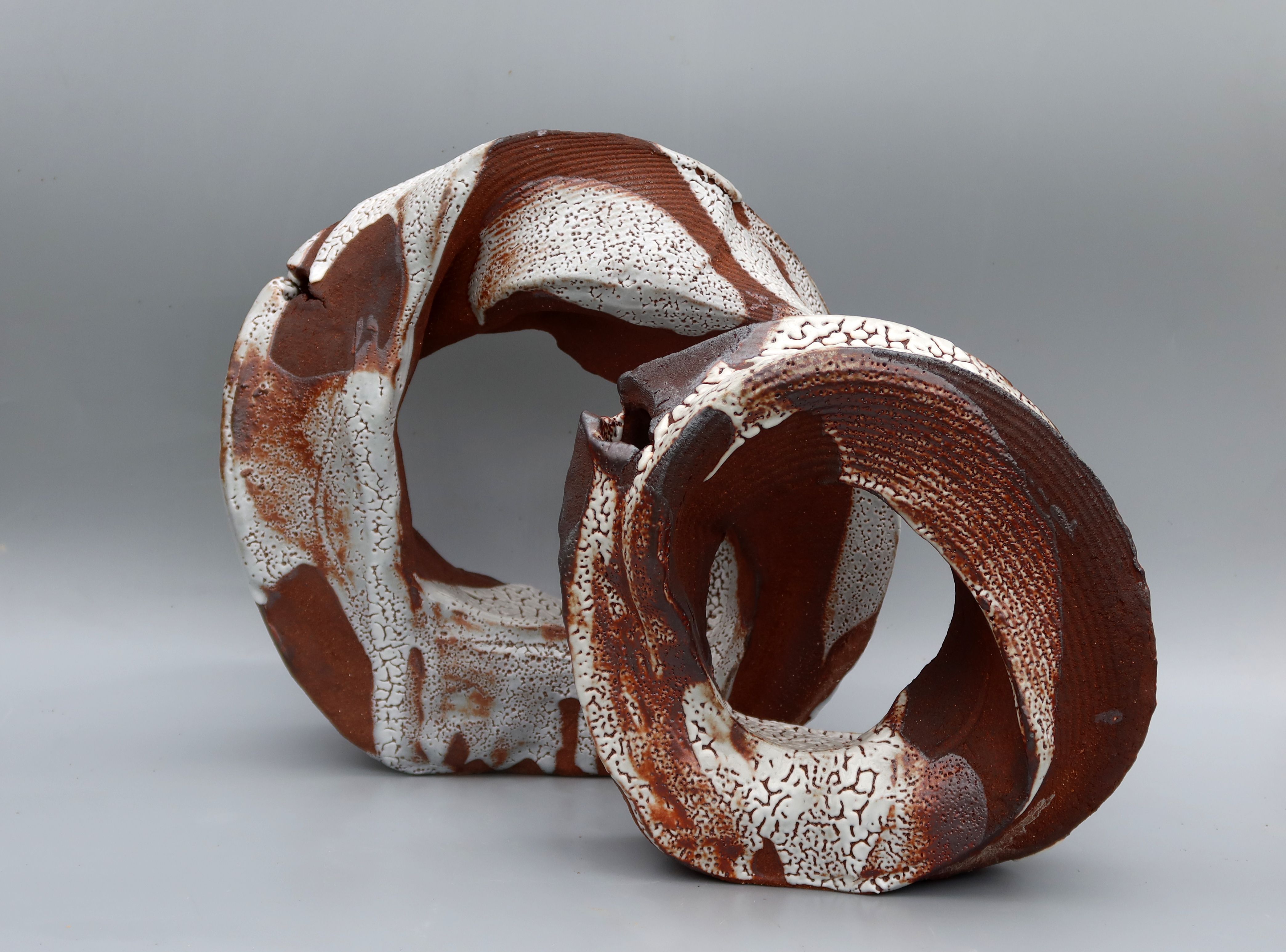
The always popular Portage Ceramic Awards finalists have been named, with an entry pool of 257 entries whittled down to a final 40.
The contemporary ceramics pieces are set to be shown at Te Uru Waitākere Contemporary Gallery from 22 November through to 23 February, in a exhibition that's been an annual fixture for 24 years.
Last year's winner Jino Jeong is among this year's finalist, having been a finalist in every Portage awards since 2017 (not counting the pandemic pause in 2020) - that current streak only beaten by Rick Rudd, who has made it into a remarkable eight consecutive appearances in the shortlist.
Nine time finalist Madeline Child is also in the reckoning, along with former Walters Prize winner Dan Arps.
The 2024 Portage Ceramic Awards finalists are: Brendan Adams, Jay Allen, Dan Arps, Wendelien Bakker, Greg Barron, Terry Bell, Elise Bishop, Margaret Bray, Joanne Brooks, Phil Brooks, Madeleine Child, Peter Collis, Bronwynne Cornish, Rod Davies, Peter Derksen, Leah Hartley, Jino Jeong, Chuck Joseph, Yukari Kaihori 海堀, HineWaiKerekere, Ted Kindleysides, Paul Maseyk, Royce McGlashen, Matt McLean, Aimee McLeod, Kirsty McNeil, Robyn Meisel, Gaeleen Morley, Lena Ochkalova, John Parker, Ben Pyne, Jo Raill, Elena Renker, Becky Richards, Liz Rowe, Rick Rudd, Carla Ruka, Duncan Shearer, Raukura Turei, and Els van Drunen.
Nice for Nicolson
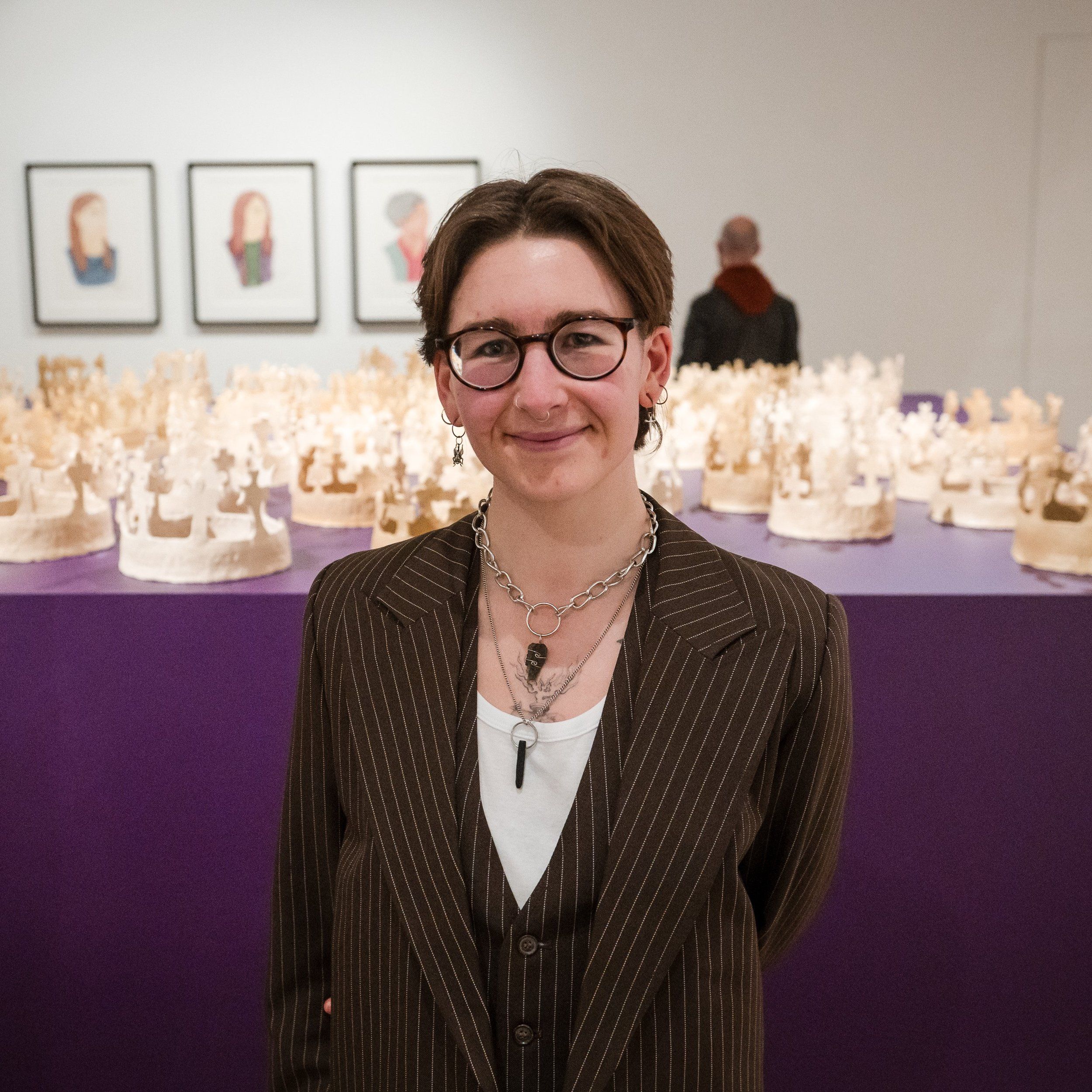
More news worth celebrating in the world of ceramics - with the Caselberg Trust announcing Jess Nicolson (Kāi Tahu, Pākehā) as its Creative Connections Resident for 2025.
The three month residency between March and May next year will alllow the self-taught artist to continue their focus on cultural and environmental sustainability. They incorporate local uku, kōhatu, sand, and ash into their work to connect with their Kāitahutaka and te taiao. Nicolson plans to find and test local Broad Bay materials for ceramic use, catalogue their findings to share in a workshop with the whānau of Ōtākou marae and exhibit a collection made from those materials.
“The materials used to make ceramics have always been under our feet, but how can we, as ceramic artists, learn about, connect to, and use those materials in a way that is culturally and ethnically sustainable? As a ceramic artist, I strive to avoid the unnecessary use of materials that are mined and imported from overseas - especially when many of them are linked to unethical work conditions and human rights abuses.
"Instead, my practice focuses on what we have available to us - right here - on our whenua and how we can build and share knowledge about these materials in a way that is respectful of mana whenua and te taiao.”
For they are jolly good Fellows
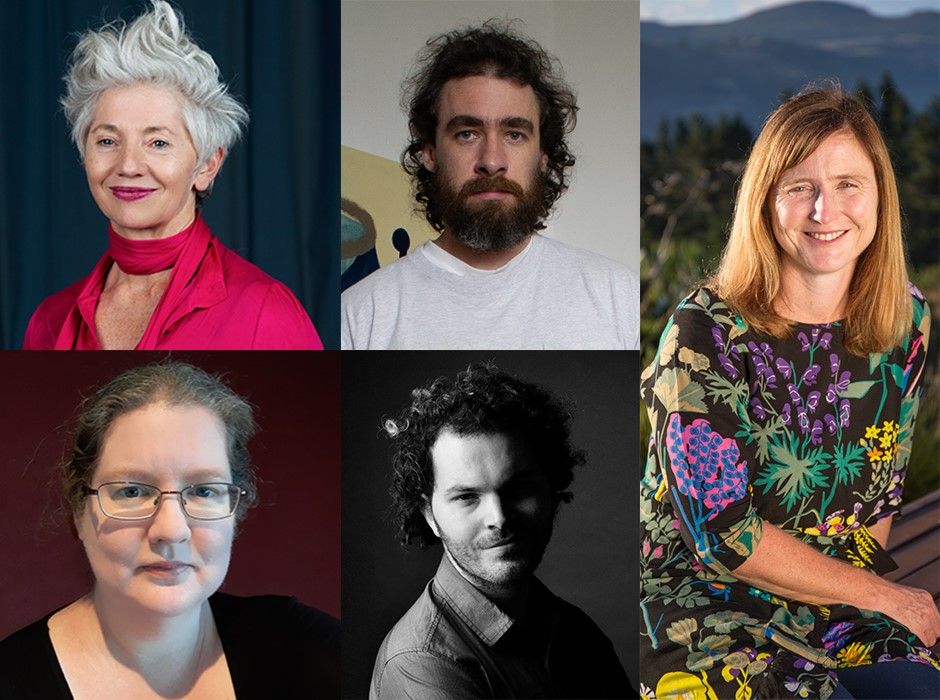
Arts and academia have always been important bedfellows. - and The University of Otago have underlined it with the announcement of its Arts Fellows for 2025.
Five Fellows will receive a stipend for between six months and one year and space on campus to pursue their creative projects.
Division of Humanities interim Pro-Vice-Chancellor, Professor Hugh Campbell notes "The Fellows often marvel at the creative freedom gained through the stability of the Fellowships. Our communities benefit from having these artists here, who all seek to collaborate, connect and enrich.
“This is a talented cohort of artists, planning ambitious projects that I am excited to see unfold."
One of them will certainly be comfortable in the Deep South surroundings. Composer, musician and music educator Dr Simon Eastwood is the current 2024 Mozart Fellow, and has had his invite extended for another year to continue his focus on Interdisciplinary collaboration.
“I have enjoyed my time in Ōtepoti thus far, exploring the musical vibrancy of the city and its people," states Eastwood, which extends to his contact with the other fellows.
"It is a pleasure to join a cohort of friendly and creative minds such as this, this has led to wonderful opportunities for collaboration."
Next year, that will include Tāmaki Makaurau based painter Reece King, who has secured the Frances Hodgkins Fellowship for 2025.
King’s work connects to the deep histories of human mark making. In recent years, his interest in visual approaches in Samoan Siapo has grown and he has been filling the gaps in his knowledge of his Samoan ancestry.
“I look forward to being in Dunedin and making heaps of big paintings, who knows what will emerge."
Samantha Montgomerie's proposed middle-grade fiction novel Sea and Sky Collide will be the focus of her stint as the College of Education Creative New Zealand Children’s Writer in Residence, aimed to show readers they are never too young to stand up for what they believe in.
“Our tamariki live in an age where our planet is in crisis. As an educator of young people, I know this causes many of them to feel a sense of powerlessness in how to respond.
“It is timely that an engaging middle grade novel, centered around the tamariki of Aotearoa, addresses these issues and reflects their own reality.”
The newly named Robert Burns Fellow, Dr Octavia Cade, has a similarly social conscious driven approach to her mahi, set to work on two projects that utilise her Master’s in Biology and PhD in Science Communication.
The first is puts the 'science' in science fiction with a novel focused on the Otago Peninsula, after warming oceans and nitrate run-off result in toxic algal blooms that devastate coastal environments.
Her second intended project is a short monograph on how the theme of ecological invasion has underpinned much of New Zealand’s speculative fiction.
“I’ve always been a fan of fantasy and science fiction. We produce a lot of it in this country, and so much of it engages with introduced species and the impacts they have on the environment.”
And it's a homecoming for South Dunedin-raised dancer, choreographer and artistic researcher Dr Carol Brown, recipient of the Caroline Plummer Fellowship in Community Dance.
Her six-month residency project Saltlines for Sealion Women is a community dance work centred on recovery, safety and kinship.
“The Fellowship comes at the right time for me to return to Ōtepoti and re-engage with the place and local communities who have given so much to my own journey as a dancer.”
Yorkshire bound
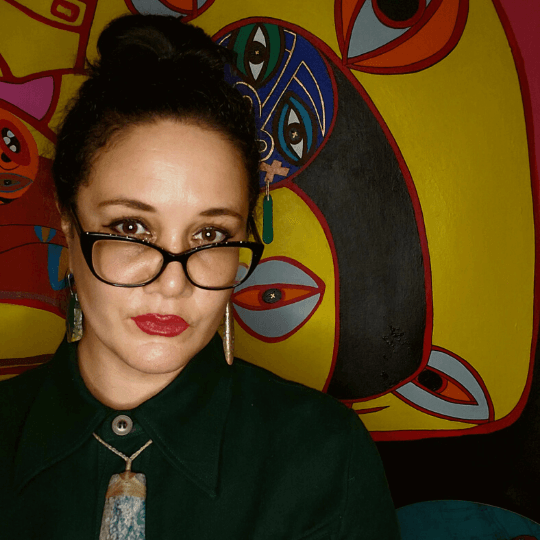
Northern England's set for a taste of New Zealand's East Coast.
Melanie Tangaere Baldwin (Ngāti Porou) will be heading to the UK to take up the 4-week Yorkshire Sculpture Park Residency Award.
a multi-disciplinary artist, curator, arts educator, founder and current director of Gisborne's HOEA! Gallery will have her travel, accommodation, living costs and materials covered, along with technical support.
Baldwin is interested in how pūrakau contribute to a more hopeful and empowered future for our mokopuna.
“I'm really humbled to have been given the privilege of this residency. I'm really excited to be able to have time, space and resource to begin researching and creating a new body of work in this unexpected and undoubtedly inspiring environment.”
Louise Lohr, Deputy Curator at YSP, selected Baldwin from a shortlist of artists. “The Curatorial team were particularly drawn to her narratives around contemporary Māori art practice and its international position, intergenerational strength and traditions of storytelling. The residency provides a platform for the dynamic exchange of knowledge and ideas, and we are looking forward to sharing in this experience with Melanie.”
Te Tuhi - along with The British Council Aotearoa New Zealand and the Pacific - are behind the partnership with YSP. Executive Director Hiraani Himona states “We are confident that Melanie will make the most of this opportunity and use it not just to enrich her own practice, but to proactively support Māori artists and connect indigenous communities across Aotearoa and abroad.”
Baldwin is the third recipient of this award, the first being Mount Maunganui-based artist Darcell Apelu in 2019. The second was Tāmaki Makaurau Auckland artist Deborah Rundle in 2020, who will be showing the outcomes of her residency in a small exhibition at YSP next month.
Back in Blackie
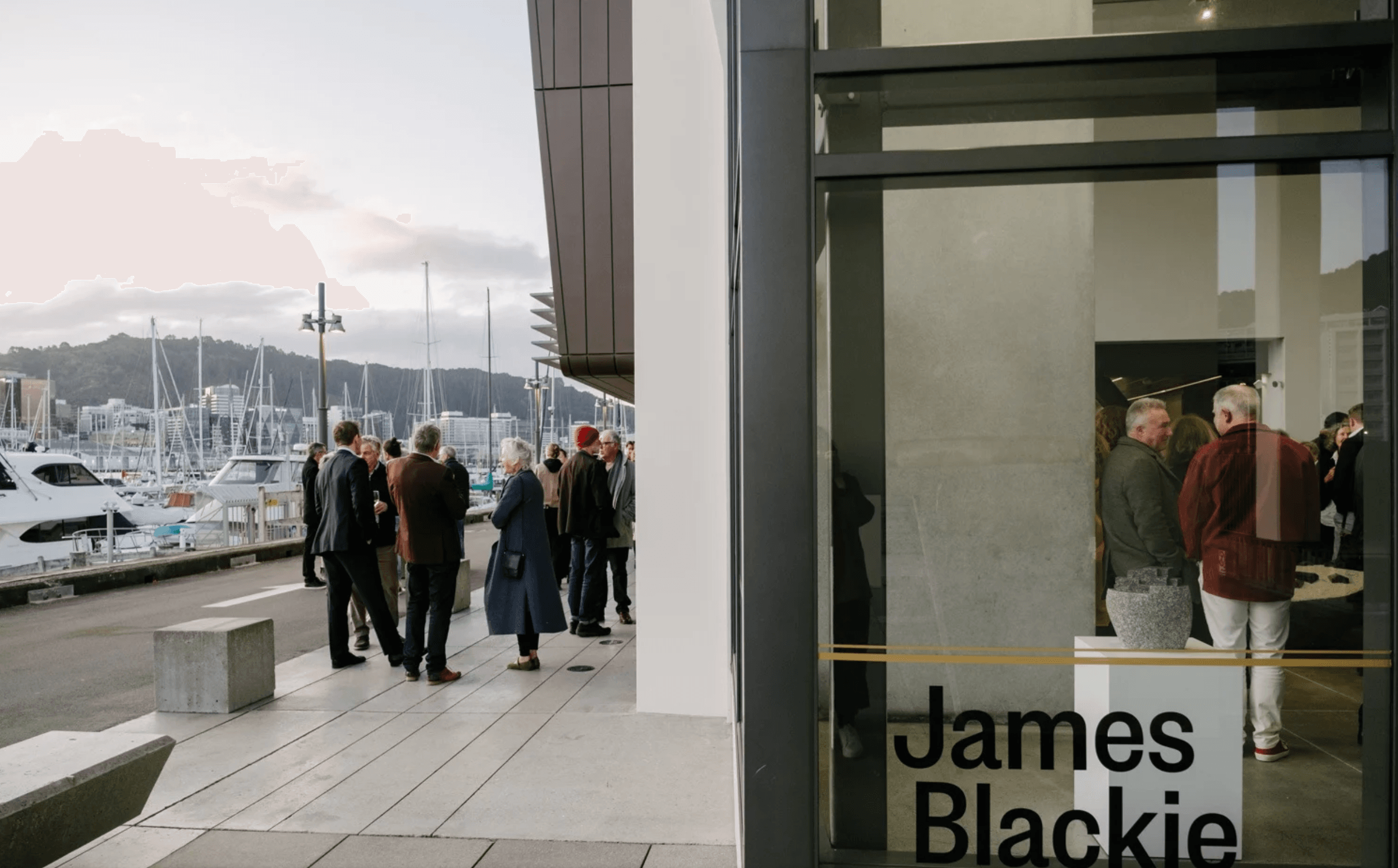
At a time where it's more common to see private galleries dying off, it's refreshing to see one re-emerge.
Arts dealer James Blackie hasn't had a 'bricks and mortar' location for five years - sparked by a stint overseas - but has re-established himself in the Wellington art community with the opening of an eponymous gallery.
Blackie spent two decades co-directing with Marcia Page at the Page Blackie Gallery - each now have their own venue under their own name in the capital.
The new James Blackie Gallery, located at the start of Clyde Quay Wharf, opened its doors for the first time at the start of the month with around 300 attendees reported to have attended the grand opening of a Joe Sheehan sculpture exhibition marking Sheehan’s first major showing in Wellington.
It was supposed to be a pop-up event, but Blackie was so enamoured with the space at the old Mojo cafe that he now owns it.
Between now and the end of the year, the gallery is set to present a Paul Dibble showcase, featuring the final works of the late bronze sculptor, followed by a project show by iconic artist Dick Frizzell.
Making Hastings home
Getting a solo gallery exhibition is a huge moment in any creative's career. Getting to call that gallery home while you prepare your collection is even more specal.
That's exacly what Ōtaki-based artist Heidi Brickell (Te Hika o Pāpāuma, Ngāti Kahungunu ki Tāmaki-nui-ā-Rua, Rongomaiwahine, Rangitāne, Ngāi Tara, Ngāti Apakura, Airihi, Kōtimana, Ingarihi, Tiamana) has been supplied.
She's underway as the first visiting artist at Te Whare Toi o Heretaunga Hastings Art Gallery - where she'll be based until mid-November - developing a new body of work, alongside a series of bi-lingual and rūmaki/immersion wānanga, drawing together local vitalisers of te reo Māori and Māori visual language.
Both will inform a solo exhibition at Hastings Art Gallery in February 2025, reflecting living conversation and shared histories with communities in Heretaunga Hastings.
“Te Whare Toi o Heretaunga bringing me here before my exhibition is a strategy that values whakapapa,” Brickell states. “It gives me the chance as an artist to begin this body of work while I’m making connections between the whakaaro and values that drive my work and kaupapa that have relevance in this takiwā.”
The programme has recently secured funding to offer further visiting artist residencies in 2025 and 2026, to be selected by forthcoming open calls.
Derby's day
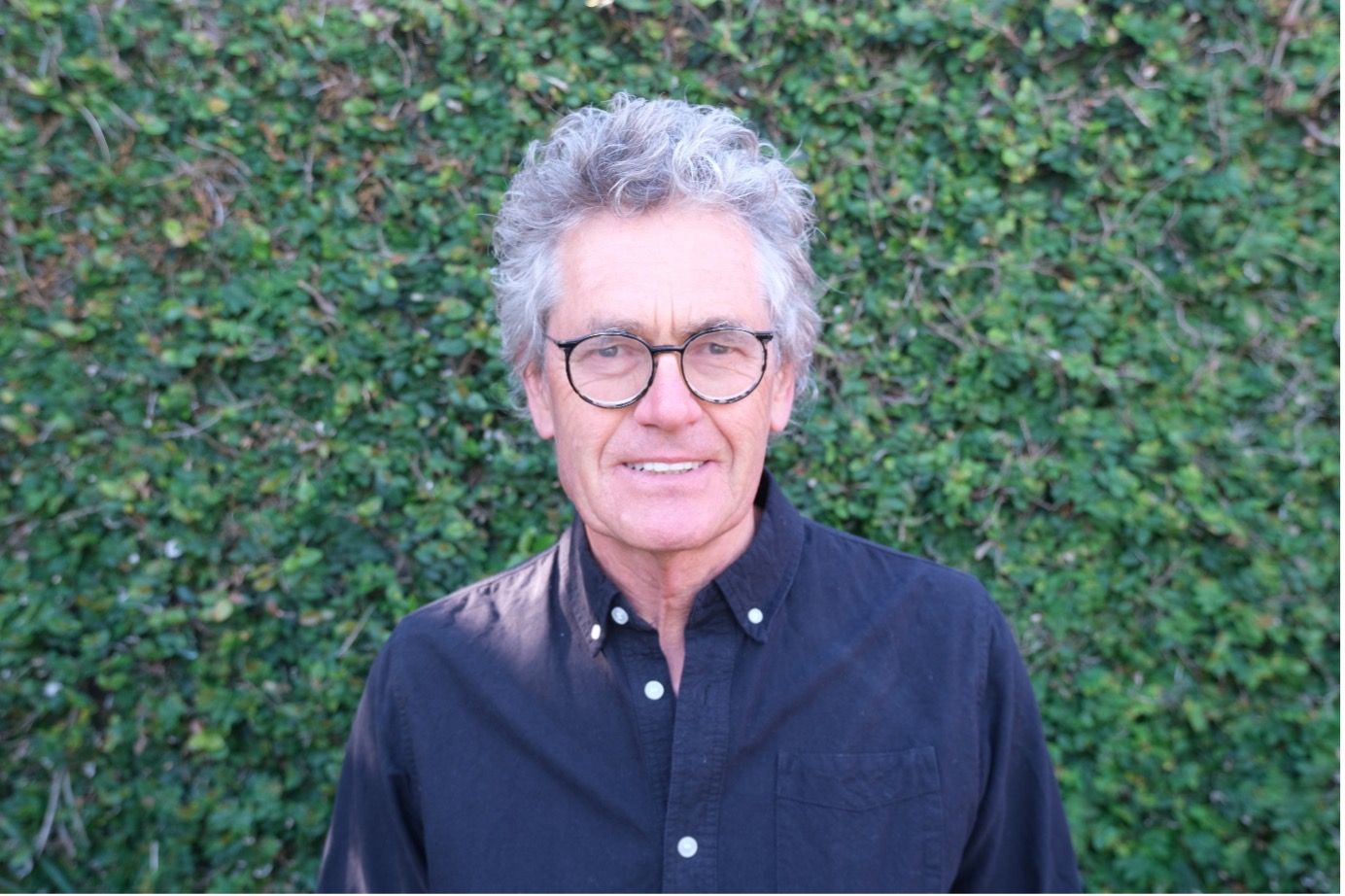
Being a freelance historian isn't the most profitable position in the literary eco-system, so being on the right end of a $25,000 prize is a major win for Wellington based writer Mark Derby.
He's been named as the recipient of this year's Copyright Licensing NZ/ NZ Society of Authors Writers’ Award - given annually to non-fiction writers of any genre -for his project on the New Zealand Wars in the Bay of Plenty
His focus is on one man in particular, as illustrated in the working title, Outlaw Prophet - Hakaraia Mahika and the Tauranga Wars.
“I’ve been intrigued by the impressive, mysterious 19th century Bay of Plenty prophet Hakaraia Mahika for decades, ever since I saw a mention to him in Belich’s The New Zealand Wars, as a leader who deserves more attention from historians. Since then I’ve been gathering archival and other information about Hakaraia in a piecemeal manner, while writing other projects such as Waitangi Tribunal reports in the Bay of Plenty region.
"This generous grant is the spur I need to turn that large body of information into a book. I’ve also recently been asked by Hakaraia’s descendants to contribute to tribal wānanga about their tūpuna and his legacy, and it’s an honour to support local Māori to engage with their own history in this way. The NZSA|CLNZ grant means I can participate fully in these wānanga at no cost to anyone else. I am very grateful for it.”
Barbara Dreaver’s project Voyaging the Pacific and Jane McCabe's Taiwhenua: Family Land in Rural Aotearoa were both shortlisted for the Award.